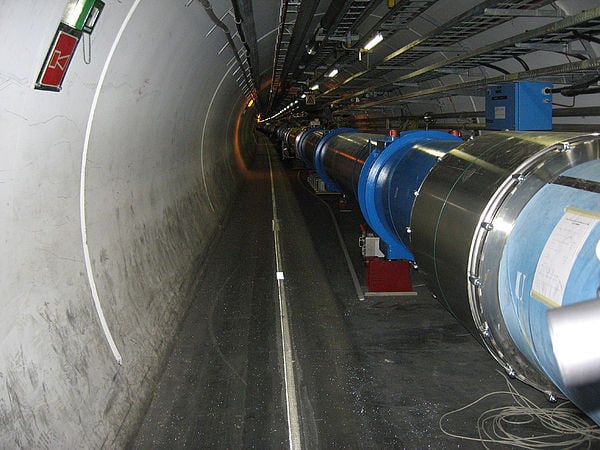Great philosophers, thinkers and writers have embraced the pioneering spirit—full of wonder, risk and great ventures into the unknown.
Archive for the ‘space’ category: Page 1028
May 26, 2015
The House just passed a bill about space mining. The future is here. — Brian Fung | The Washington Post
Posted by Seb in categories: business, space, space travel

“What could the FAA, an agency whose chief concern is air travel, want with outer space? Well, the FAA is the agency that grants licenses for commercial space launches (the ones that aren’t performed for NASA or the Defense Department, anyway). This potentially gives the nation’s aviation regulators a tremendous amount of power over the fledgling private space industry.” Read more
May 21, 2015
NASA and The Planetary Society Launch the LightSail
Posted by Odette Bohr Dienel in categories: astronomy, cosmology, education, energy, habitats, physics, science, solar power, space, space travel
May 19, 2015
Will we ever understand the beginning of the universe? — Ross Andersen | AEON
Posted by Seb in category: space
“People are wedded to these ideas, because they grew up with them. Scientists don’t like to change ideas unless they’re forced to. They get involved with a theory. They get emotionally attached to it. When an idea is looking shaky, they go into defensive mode.” Read more
May 10, 2015
Watching This Simulated Star Die Is Mesmerizing…and Good Science Too
Posted by Seb in categories: physics, space
 By Jason Dorrier — SingularityHub
By Jason Dorrier — SingularityHub
Traditionally, we’ve done science by observing nature in person or setting up experiments in the lab. Now, a relatively new scientific technique is proving a powerful tool—simulating nature on supercomputers.
A few years ago, Caltech astrophysicists released a supercomputer simulation of a supergiant star’s core collapsing just prior to going supernova. Apart from a stunning visual, simulations like this hinted that Type II supernova explosions were asymmetrical—a guess just recently backed by empirical observation.
Apr 30, 2015
Should We Arm the International Space Station With Lasers to Destroy Space Junk?
Posted by Seb in category: space
By Jason Dorrier — SingularityHub
If you look closely enough, Earth has rings. NASA estimates there are some 500,000 pieces of space debris in orbit. Space junk, traveling up to ten times the speed of a bullet, endangers satellites and spacecraft—and it is very, very hard to remove. A team of scientists, however, think they have a way: Lasers.
A recent paper by Tokyo’s Riken institute proposes using a telescope on the International Space Station (ISS) to track small bits of space junk. A laser on the telescope would target and zap the junk, sending it crashing into the atmosphere, where it would vaporize—no longer a threat to humans or satellites. Read more
Apr 24, 2015
To be a Space Faring Civilization
Posted by Benjamin T. Solomon in categories: astronomy, cosmology, human trajectories, innovation, science, space, space travel, transportation
Until 2006 our Solar System consisted essentially of a star, planets, moons, and very much smaller bodies known as asteroids and comets. In 2006 the International Astronomical Union’s (IAU) Division III Working Committee addressed scientific issues and the Planet Definition Committee address cultural and social issues with regard to planet classifications. They introduced the “pluton” for bodies similar to planets but much smaller.
The IAU set down three rules to differentiate between planets and dwarf planets. First, the object must be in orbit around a star, while not being itself a star. Second, the object must be large enough (or more technically correct, massive enough) for its own gravity to pull it into a nearly spherical shape. The shape of objects with mass above 5×1020 kg and diameter greater than 800 km would normally be determined by self-gravity, but all borderline cases would have to be established by observation.
Third, plutons or dwarf planets, are distinguished from classical planets in that they reside in orbits around the Sun that take longer than 200 years to complete (i.e. they orbit beyond Neptune). Plutons typically have orbits with a large orbital inclination and a large eccentricity (noncircular orbits). A planet should dominate its zone, either gravitationally, or in its size distribution. That is, the definition of “planet” should also include the requirement that it has cleared its orbital zone. Of course this third requirement automatically implies the second. Thus, one notes that planets and plutons are differentiated by the third requirement.
As we are soon to become a space faring civilization, we should rethink these cultural and social issues, differently, by subtraction or addition. By subtraction, if one breaks the other requirements? Comets and asteroids break the second requirement that the object must be large enough. Breaking the first requirement, which the IAU chose not address at the time, would have planet sized bodies not orbiting a star. From a socio-cultural perspective, one could suggest that these be named “darktons” (from dark + plutons). “Dark” because without orbiting a star, these objects would not be easily visible; “tons” because in deep space, without much matter, these bodies could not meet the third requirement of being able to dominate its zone.
Tags: 55 Cancri e, AIAA, American Institute of Aeronautics & Astronautics, atmosmax, auton, darktons, Division III Working Committee, galactica, IAU, International Astronomical Union, kyton, NASA, Nuclear and Future Flight Propulsion Technical Committee, Planet Definition Committee, planetary science, Pluton, solarmax, Space Faring Civilization, starship, Y-Dwarfs, zoeton
Apr 24, 2015
Article: Harnessing “Black Holes”: The Large Hadron Collider – Ultimate Weapon of Mass Destruction
Posted by LHC Kritik in categories: astronomy, big data, computing, cosmology, energy, engineering, environmental, ethics, existential risks, futurism, general relativity, governance, government, gravity, information science, innovation, internet, journalism, law, life extension, media & arts, military, nuclear energy, nuclear weapons, open source, particle physics, philosophy, physics, policy, posthumanism, quantum physics, science, security, singularity, space, space travel, supercomputing, sustainability, time travel, transhumanism, transparency, treaties

Harnessing “Black Holes”: The Large Hadron Collider – Ultimate Weapon of Mass Destruction
Why the LHC must be shut down
What would you have done to stop catastrophic events if you knew in advance what you know now.
We have the moral obligation to take action in every way we can.
The future is in our hands. The stakes are the highest they have ever been. The Large Hadron Collider developed by the European Centre for Nuclear Research (CERN) is a dangerous instrument. The start-up April 5 has initiated a more reckless use of LHC’s capabilities.
Continue: http://www.globalresearch.ca/the-large-hadron-collider-ultim…on/5442232
Apr 24, 2015
CERN-Critics: LHC restart is a sad day for science and humanity!
Posted by LHC Kritik in categories: astronomy, big data, complex systems, computing, cosmology, energy, engineering, ethics, existential risks, futurism, general relativity, governance, government, gravity, hardware, information science, innovation, internet, journalism, law, life extension, media & arts, military, nuclear energy, nuclear weapons, particle physics, philosophy, physics, policy, quantum physics, science, security, singularity, space, space travel, supercomputing, sustainability, time travel, transhumanism, transparency, treaties
Continue reading “CERN-Critics: LHC restart is a sad day for science and humanity!” »
Apr 18, 2015
Game-Changing Technologies
Posted by Mark Nall in categories: augmented reality, disruptive technology, economics, space
Game-changing technologies can be a waste of money or a competitive advantage. It depends on the technology and the organization.
It seems like the term “game-changing” gets tossed around a lot lately. This is particularly true with respect to new technologies. But what does the term mean, what are the implications, and how can you measure it?
With regarding to what it means, I like the MacMillan dictionary definition for game-changing. It is defined as “Completely changing the way that something is done, thought about, or made.” The reason I like this definition is it captures the transformational nature of what springs to mind when I hear the term game-changing. This should be just what it says. Not just a whole new ball game, but a whole new type of game entirely.
Every industry is unique. What is a game-changer for one, might only be a minor disruption or improvement for another. For example, the internal combustion engine was a game-changer for the transportation industry. It was important, though less of a game-changer for the asphalt industry due to secondary effect of increased demand for paved roads.
Tags: leadership, technology









